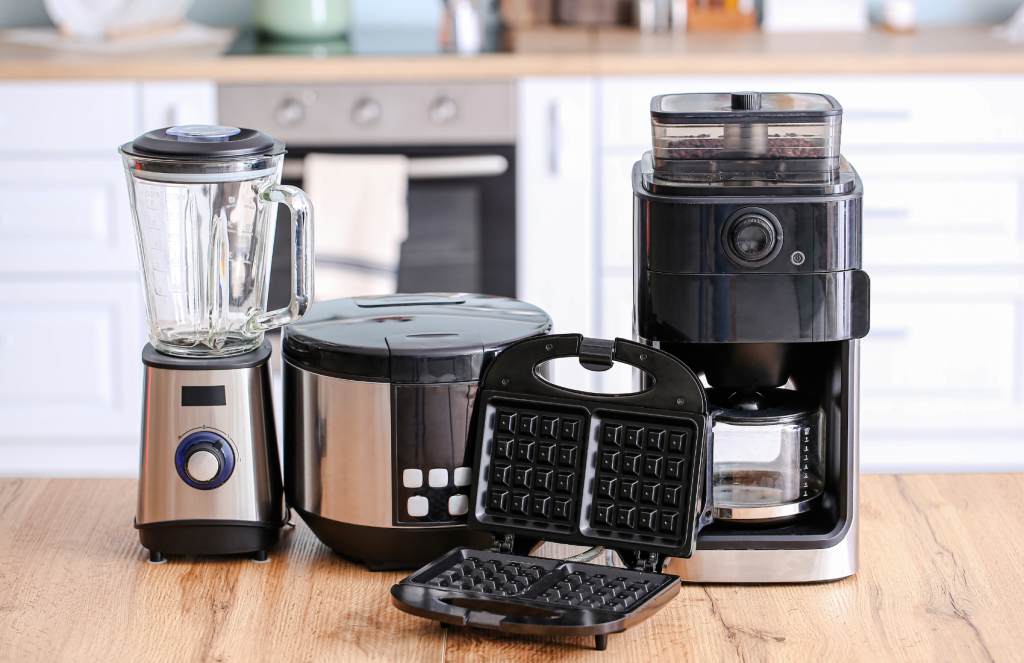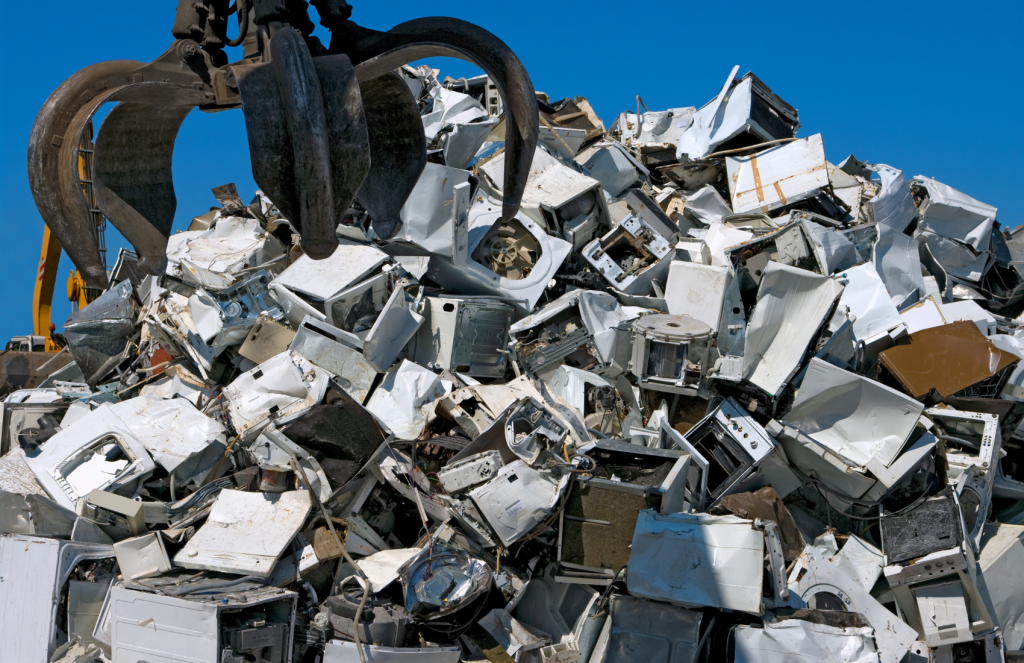How to Dispose of Small Appliances, And Why it Matters
Why Your Old Toaster Matters More Than You Think
That coffee maker gathering dust in your cabinet. The toaster that burns everything now. The blender with the mysteriously loose blade. We all have them—small appliances that have outlived their usefulness but somehow still occupy valuable space in our homes. What happens when you finally decide to clear them out? If you’re like most Americans, you might be tempted to simply toss them in the trash. But here’s the surprising truth: that decision has bigger consequences than you might realize, which is why your choices around small appliance disposal can make a difference.
Every year, Americans generate over 3.4 million tons of electronic waste, and small appliances make up a significant portion of this waste stream. These everyday items contain valuable materials like copper, aluminum, and even small amounts of precious metals that can be recovered and reused—if they’re disposed of properly.
What Counts as a “Small Appliance” Anyway?
When we talk about small appliances, we’re referring to those portable or semi-portable electrical devices that help us in our daily lives:
- Kitchen appliances (toasters, coffee makers, blenders, microwaves)
- Personal care items (hair dryers, electric shavers, curling irons)
- Home environment devices (fans, space heaters, humidifiers)
- Small entertainment gadgets (portable speakers, digital clocks)
What makes these items challenging to dispose of is their composition—a mix of plastics, metals, electrical components, and sometimes even hazardous materials like batteries or refrigerants that shouldn’t end up in landfills. See our full list of accepted items here.
The Hidden Environmental Cost of Improper Small Appliance Disposal
When small appliances end up in landfills, they don’t just take up space—they can release harmful substances into the soil and groundwater. Circuit boards can contain lead and mercury, while older devices might house chemicals that are now known to be environmental hazards.
Beyond the pollution factor, there’s also the waste of valuable resources. The copper in your coffee maker’s wiring, the aluminum in your toaster, and the various plastics in your blender all required energy and resources to produce. When we throw these materials away rather than recycling them, we’re essentially throwing away the opportunity to reduce our environmental footprint.
How to Dispose of Small Appliances: A Step-by-Step Guide
Step 1: Consider If It Can Be Repaired or Donated
Before deciding to dispose of your small appliance, ask yourself:
- Can it be fixed? Sometimes a simple repair can extend the life of an appliance by years.
- Is it still working but just not needed? Consider donating it to a thrift store or local charity.
Step 2: Prepare Your Appliance for Disposal
If recycling is necessary, proper preparation is important:
- Remove any batteries (they need to be recycled separately)
- Clean the appliance (especially important for kitchen items)
- Remove any personal data (relevant for smart appliances)
- Gather manuals or warranty information if you still have them
Step 3: Choose the Right Disposal Method
Not all disposal methods are created equal. Here are your main options:
Curbside Recycling: While convenient, most municipal recycling programs aren’t equipped to handle small appliances. The mixed materials and potentially hazardous components require specialized processing.
Retailer Take-Back Programs: Some retailers like Best Buy offer recycling programs where you can drop off old appliances when you purchase new ones.
Municipal Drop-Off Centers: Many cities have special collection centers for electronic waste, including small appliances.
Specialized E-Waste Recyclers: This is where CJD E-Cycling comes in—we specialize in properly handling electronic waste of all kinds, including small appliances.
Why Choose Professional E-Cycling Services?
At CJD E-Cycling, we understand the complexities of small appliance disposal. Our process ensures that:
- Hazardous materials are safely removed and properly handled
- Recyclable materials are separated and processed for reuse
- Any data-containing devices are securely wiped
- Documentation is provided for proper disposal (important for businesses)
Unlike general waste management, we focus specifically on electronic waste, with trained staff and specialized equipment designed to maximize recovery and minimize environmental impact.
The CJD E-Cycling Difference: Our Process
When you bring your small appliances to us:
- We assess each item individually to determine the best recycling path
- Our trained technicians disassemble appliances to separate valuable materials
- Components are sorted by material type (metals, plastics, circuit boards, etc.)
- Materials are processed and sent to specialized recycling facilities
- Hazardous components are safely handled according to environmental regulations
This comprehensive approach ensures that up to 90% of materials from your old appliances can be recovered and given new life.
Making a Difference, One Appliance at a Time
Sarah from St. Louis brought in a collection of small kitchen appliances that had accumulated in her basement over the years. “I had no idea what to do with them,” she told us. “I knew throwing them in the trash wasn’t right, but I wasn’t sure where to take them.”
After dropping them off at CJD E-Cycling, Sarah was surprised to learn that her collection of old appliances would yield several pounds of recyclable metals and plastics. “It feels good knowing these aren’t just sitting in a landfill,” she said.
Stories like Sarah’s happen every day at our facilities. Each small appliance properly recycled represents a step toward a more sustainable future and a reduction in our collective environmental footprint.
Take Action Today
Ready to responsibly dispose of your small appliances? Here’s how to get started:
- Gather your unused or broken small appliances
- Prepare them as outlined above
- Visit one of our convenient drop-off locations
- Feel good knowing you’ve made the environmentally responsible choice
At CJD E-Cycling, we’re committed to making responsible electronic waste disposal accessible and convenient. By choosing specialized e-waste recycling for your small appliances, you’re not just clearing clutter—you’re contributing to a more sustainable future.
Small appliances may be, well, small—but their environmental impact doesn’t have to be. Together, we can ensure these everyday items don’t become tomorrow’s environmental problem.
Have questions about small appliance disposal or other e-waste concerns? Contact us today or visit our website for more information on our services and drop-off locations.


